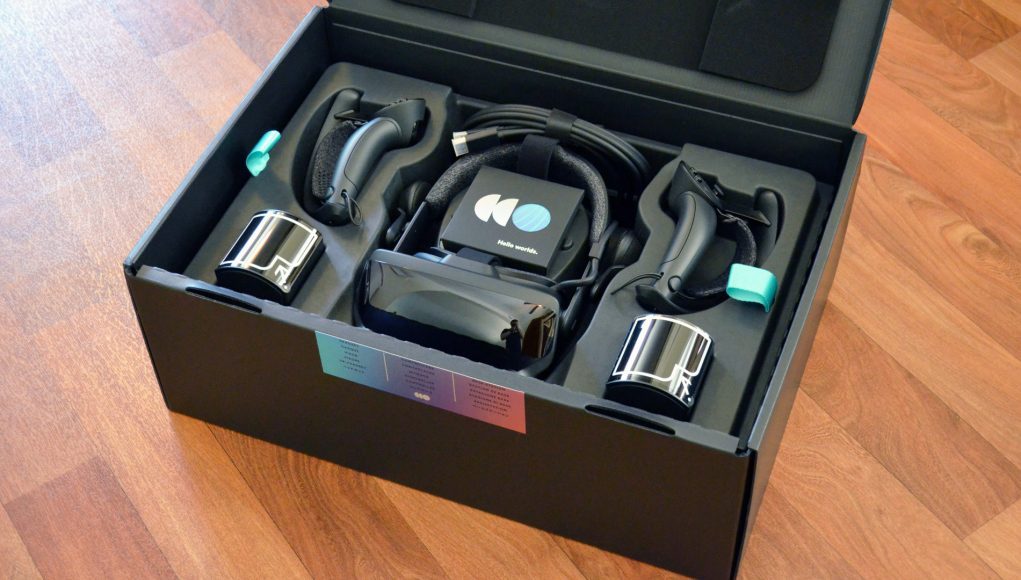The Valve Index headset is more expensive and less user-friendly than its nearest competitor, the Oculus Rift S, but the experience it offers is the clear choice for VR enthusiasts who want to maximize immersion. Read on for our full Valve Index review to learn if this headset is for you.
As usual, we’ll start up top with a high level review summary followed up with an in-depth review further down. [Note: this review is an expansion and refinement of our previous in-depth preview, so some of the text may be familiar].
Valve Index Review Summary
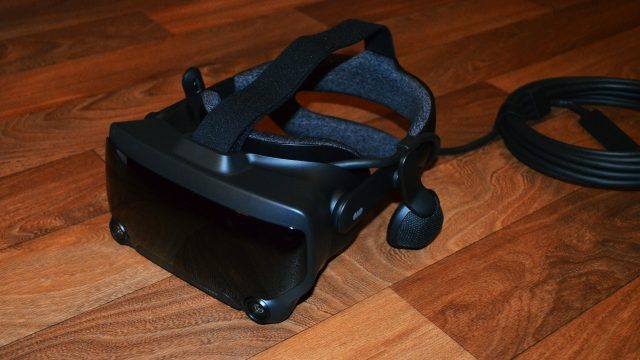
Valve’s Index headset asks for a premium price and manages to deliver a premium experience. From the a hardware standpoint, the headset feels very well constructed and I find it to be the most comfortable headset currently available. That’s thanks to its thoughtful ergonomic design which offers a wide range of adjustments (including hardware IPD and lens-to-eye adjustments) as well as spring-loaded side struts which let you put on and remove the headset without tightening and loosening it every time.
Though it has the same 1,440 × 1,600 per-eye resolution as the Vive Pro, the move to LCD displays with RGB subpixels offers better fill factor and a bit less screen-door effect. Compared to the original Vive and Rift (both with 1,080 × 1,200 per-eye OLED displays), it’s a significant reduction in the screen-door effect, but still visible at times.
LCD means worse black levels, so darker scenes have a greyish, low-contrast look compared to the rich blacks seen in OLED headsets. I haven’t been able to spot any ghosting from the Index’s display (which is more common with OLED displays).
Index supports 80Hz, 90Hz, 120Hz, and 144Hz refresh rates. Most PC headsets run at 90Hz which looks and feels fine, but there’s a definite immersive benefit to going higher. With 144Hz on Index, everything just feels smoother and tracking even feels tighter (because latency is lower and tracked objects move more smoothly). However, to get the most out of the higher refresh rates, you’ll want to pair Index with a very high-end GPU (like an RTX 2080 Ti) and CPU, otherwise you may need to turn down the headset’s resolution to maintain high frame rates without continuous use of reprojection or motion smoothing.
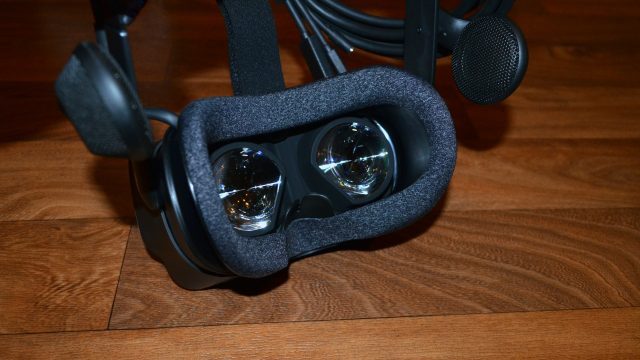
Between its resolution, lenses, high refresh rates, and ultra low persistence, Index is the leader in visual clarity over pretty much any headset except (arguably) the HP Reverb, which offers much more resolving power thanks to 2,160 × 2,160 per-eye resolution concentrated over a smaller field of view (but is somewhat compromised by more than ideal mura).
Index offers the widest field of view than other headsets in its class, at around 120 or 130 degrees. This is thanks to larger lenses, but also a dial on the side of the headset that allows you to bring the lenses very close to your eyes, which enables more users to experience the optimal field of view. The improvement doesn’t feel like a night and day difference at first (like it does with the ultra-wide FOV Pimax headsets), but going back to other headsets makes it quite noticeable and you’ll be wishing you were back in Index.
The larger field of view also brings with it a larger sweet spot, which means the image sharpness doesn’t fall off as fast as you look toward the edges of the lens. The Vive headsets have a notoriously small sweet spot, and Index offers a nice improvement by comparison. As with any headset, dialing in the fit to get your eye to the center of the sweet spot is important for maximum clarity.
Unfortunately the new lens design brings quite a bit of glare with it, which illuminates the edges of the lens when there’s bright objects against darker backgrounds. At times this can be as bad if not a little bit worse than the original Vive, but as with pretty much any headset, you won’t see it unless you’re looking at something high contrast. The glare seems to concentrate toward the edges of the lens and you can reduce it somewhat by dialing back the field of view a bit.
The headphones on Index are simply excellent; easily the best of any headset on the market. The floating design is smart in the way that the headphones don’t touch your ears at all, but still offer tremendous audio quality with lots of power, deep bass, and a full audio profile. Compared to the Rift S (which has notoriously bad audio quality), it’s truly a night and day difference. Index also offers better sound than the Vive Pro and the original Rift (which was the audio quality leader, until Index).
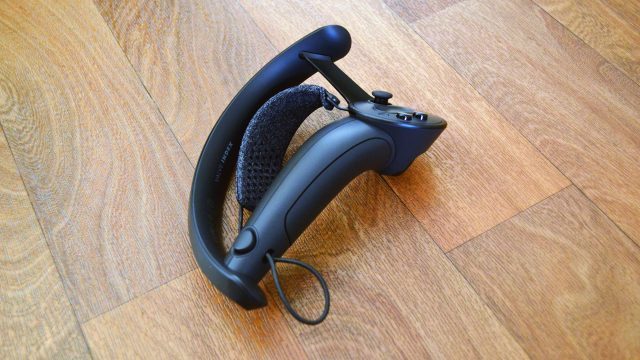
The Valve Index controllers are a nice upgrade (finally) from the Vive wands thanks to the addition of a thumbstick and face buttons, as well as a more intuitive ‘grab’ input in the form of a force-sensitive handle.
It can be difficult to find a good fit around you hand with the ‘cinch’ design, but the controller works well once you do, allowing you to naturally clasp the handle to initiate a ‘grab’, or release it completely to release your grab. At the top of the cinch there’s a little metal piece which can be moved between four positions to make the cinch better fit different hand sizes but it can get in the way of reaching your thumb to the thumbstick and face buttons.
Index can track the position of all of your fingers, which is interesting, but frankly doesn’t seem to add much to the experience. There’s the novelty period of looking at your fingers move for the first two minutes of using the controllers, but beyond that, there’s few meaningful interactions that actually come from it. On the surface it seems like independently tracked fingers means you’d suddenly be able to intuitively interact with the virtual world using fine finger manipulations, but the reality is that this isn’t really possible with the limitations of this kind of finger tracking. Unless Valve’s upcoming VR game (or some other creative developer) shows that this finger tracking tech is truly compelling for gameplay, my gut says it might have been better to scrap the extra tracked fingers in favor of a controller that’s smaller, lighter, and cheaper, with a more concentrated center of gravity
While headsets like the Rift S are moving toward a more user-friendly approach by adopting inside-out tracking, Index is still reliant on the same external tracker paradigm as before. That means you’ll need a dedicated playspace with room to permanently or semi-permanently mount beacons for tracking. This makes for a longer and more complex initial setup process, but means robust and performant tracking in the end.
SteamVR (the component of Steam which is required for using Index) still feels like a power-user’s utility rather than an inviting portal into virtual reality. I’m a hardcore PC gamer who has been using VR for years now, and I still find some of SteamVR’s settings confusingly arranged and interconnected. Much of the options are simply not explained in any meaningful way, and novice users could easily degrade their experience by accidentally hitting a wrong check box. SteamVR is still finicky at times and will occasionally test your troubleshooting skills.
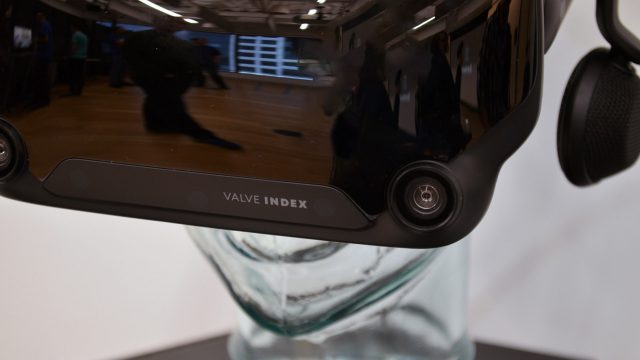
Despite having two decent cameras on the front of Index, Valve is presently doing almost nothing with them. You can double-press the system button to look through the cameras, but it takes far too long for the view to appear for it to be any use for quickly peering outside of the headset. Valve has teased some stylized pass-through modes previously, but it seems they’re still treating the cameras as a development toy instead of a proper feature of the headset.
By contrast, the pass-through view on the Rift S is used to make setting up the play boundaries easier (by looking through the passthrough view and tracing the play area) and also makes onboarding easier because you can look through the cameras to easily pick up your controllers after you put on the headset (which is much nicer than feeling around for the controllers and putting them on blindly). Valve really should steal these ideas to make Index a bit less cumbersome in the initial setup and onboarding.
– – — – –
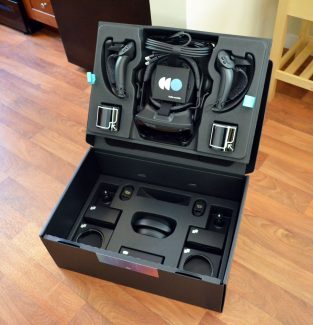
The full Index kit runs $1,000 and comes with all of 2016’s VR caveats: set up permanent or semi-permanent tracking equipment, figure out how to use fiddly SteamVR software and settings, and learn how to dial in all of the headset’s adjustments. Not to mention that to get the most out of the 144Hz capable headset, you’ll want enthusiast grade PC hardware to match.
In this sense, I liken the Index approach to a DSLR camera—more expensive, but capable of taking great photos as long as you put in the time to learn the ins and outs, and have appropriate hardware to support it (like a good tripod and lens).
Oculus on the other hand is aiming more for the ‘point-and-shoot’ camera approach with Rift S—lower cost, less complexity, and more user friendly—but simply not capable of achieving the same level of fidelity.
For that reason, Index is a great choice for enthusiasts, but not a great choice for novice users or those who find themselves not diving into VR very often because of the friction of use.
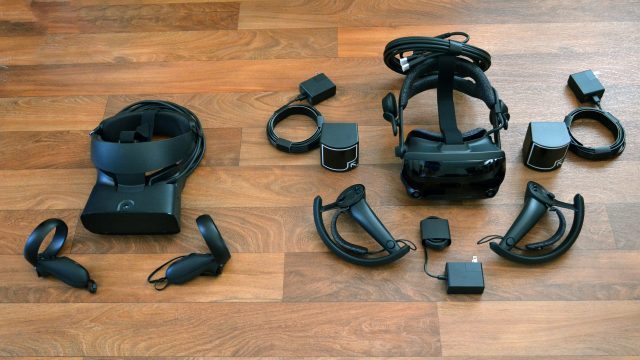
If you have a first-gen VR headset and find you aren’t using it very often, consider that ease-of-use (and not things like resolution, field of view, and refresh rate) might be the reason why—in that case, Index isn’t likely to make you use VR any more than you are currently. On the other hand, if you’re a diligent enthusiast who uses VR plenty already with a first-gen headset, Index will likely be a good upgrade to your experience.
Of course, a headset is nothing without content. Index is compatible with all SteamVR content, and while the controllers work fine for existing apps with legacy input bindings, developers will need to update their games if they want to make specific use of the controller’s new features. Hopefully Valve’s upcoming VR game will come along and show what the controllers are truly capable of, but they still haven’t announced a release date for the game, let alone even given it a name.
Previously, picking a SteamVR headset over an Oculus headset essentially meant being locked out from playing Oculus exclusive content; although it’s been technically possible to play Oculus games through the unofficial ‘Revive’ mod, the old Vive wands were a poor stand-in for the Touch controllers and made it a compromised experience. The Index controllers on the other hand seem to work much better for this purpose, making Oculus exclusive content finally feel truly playable on headsets like Index. And while that opens the exciting possibility of playing some of the best VR content from Oculus, it’s a bit of a gamble considering Oculus could break support for Revive at any time.
Valve Index In-depth Review
Hardware
Ergonomics
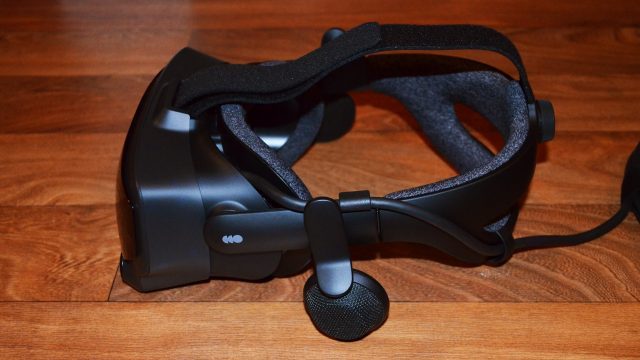
For my head, Index is the new bar for headset comfort, surpassing the Vive Pro. For pretty much any headset, long sessions mean regularly making small adjustments to maintain comfort; with Index it feels like I need less little adjustments over long sessions than with other headsets.
Ergonomics in VR headsets isn’t just about comfort though, it’s also about visual clarity, since getting your eyes well aligned with the lenses can make the difference between a sharp and comfortable image, or a blurry one with eyestrain. Without being able to get your eyes comfortably into ideal alignment, pretty much every visual aspect of the headset can be compromised.
Thankfully, Index has a physical IPD adjustment, which ranges from 58mm to 70mm, accommodating the vast majority of users. On top of that, the knob on the right side of the headset lets you bring the lenses very close to your eyes, maximizing the field of view and your ability to align with the lenses’ sweet spot. The Vive Pro has a similar lens-to-eye distance adjustment but it doesn’t let you get the lenses as close as Index.

From a comfort standpoint, Index’s padding is soft and comfortable; a knob on the back of the head-mount lets you finely adjust the tightness of the head-mount, and the visor rotates about the hinges to find a good resting place against your face. Though it’s fine for me, I don’t expect that the face gasket will fit everyone perfectly (it’s extremely similar in geometry to that of the original Oculus Rift, so if you have experience with that headset you’ll know what to expect). Thin-framed glasses ought to fit inside ok, and the lens-to-eye adjustment knob will make it easy to make space for them in the direction of the lenses.
In case it doesn’t fit everyone well, the face gasket is magnetically attached and easily removable; Valve says it plans to release CAD files to make it easy for third parties to make accessories for Index, which will hopefully mean readily available aftermarket choices.
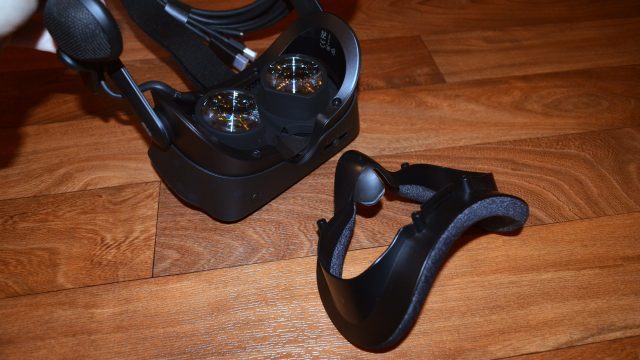
While the padding is pleasant against the skin, it appears to be a covering of sorts over top of some underlying foam. As someone who plays a good bit of Beat Saber (which means sweating into the headset’s padding), the padding seems to want to hold onto moisture more than with other headsets which use foam with no covering. The ability to easily remove the magnetic face gasket is really nice for pulling it out for a quick cleaning after a sweaty session, but those planning frequent workouts in their headset may want to keep an eye out for a fitness-focused aftermarket gasket.
Index’s side struts are ‘springy’, just like the original Rift. This means that there’s some ‘play’ to the fit, such that you can put the headset on and take it off ‘hat style’ (back to front) without re-adjusting the tightening knob in the back every time. For the most part, that means that once you dial in the fit of Index, you shouldn’t have to fiddle with it often. That’s a nice improvement over headsets like Rift S and Vive Pro, which generally need to be tightened each time you put them on and then loosened before being taken off.
Visuals

Field of View
Thanks to Index’s ergonomic design, it’s easy to get your eyes right into the sweet spot of the lenses for the best visuals. This matters not just for clarity, but certainly for field of view too. Between the displays and the ability to bring the lenses very close to your eyes, Valve says they expect that most users will get a field of view that’s roughly 20 degrees wider than they’d see with a Vive. The difference at first doesn’t seem massive, but going back to headsets like the Vive and Rift S makes it abundantly clear that Index has the widest and most desirable FOV of the bunch.
It’s possible to bring the lenses so close that you can start to see the edges of the displays in your peripheral vision. This is generally undesirable, but tolerable if you want the maximum possible FOV. If you’d prefer the soft round edges of the lenses as the limit of your FOV instead, it’s incredibly easy to dial the lenses back just a bit until you don’t see the display edges anymore.
Display
With a resolution of 1,440 × 1,600 per-eye, Index uses an LCD display with RGB subpixels which are known for having better fill-factor/less screen door effect (SDE). It’s a notable reduction in SDE and improvement in resolution compared to the original Vive and Rift (both use OLED displays at 1,080 × 1,200 per-eye); SDE is still visible, but easily melts away in darker scenes and against textures.
Compared to the Vive Pro (1,440 × 1,600 per-eye OLED) however, there’s little overall difference in SDE. This is likely partly due to the larger Index FOV (which serves to reduce pixel density compared to a smaller FOV), and the fact that RGB subpixels create a slightly more defined (if smaller) SDE structure compared to the offset pattern seen with PenTile OLED displays.
Though the Rift S has a lower resolution (1,280 × 1,440), its concentrated over a smaller field of view than Index, making the sharpness/resolving of the headsets quite similar.
Mura (inconsistencies in brightness and color between pixels) is fairly minimal; it’s improved over the original Vive, on par with the Vive Pro, and a bit more visible than the Rift S.
Overall clarity on Index pulls ahead of the Rift S and Vive Pro however, which is thanks to the super low persistence, high refresh rates, and lens differences. Index’s overall clarity even competes well with HP’s Reverb headset, which has much higher resolution of 2,160 × 2,160 (and thus more resolving power) but quite a bit of mura, and can’t run at such high refresh rates or with such low persistence.
Refresh Rate & Low Persistence
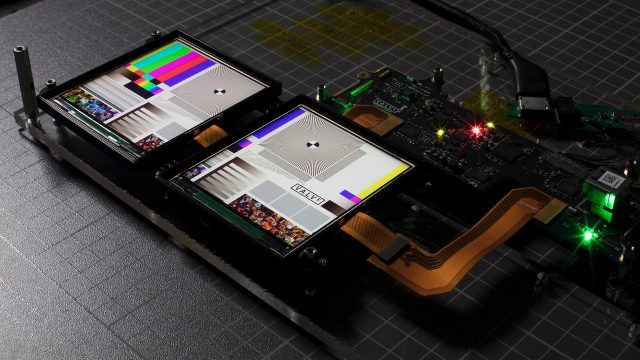
While most PC VR headsets have a 90Hz refresh rate (with the exception of the Rift S at 80Hz), Index is capable of 80Hz, 90Hz, 120Hz, and 144Hz.
It’s hard to explain exactly how a higher refresh rate makes the view through Index look more immersive and solid, but it definitely does. Even though the 80Hz or 90Hz of other headsets is plenty comfortable and looks good, it’s still far from the ‘perfectly smooth’ motion of real life. At 144Hz, everything just looks that much more smooth, adding to the ‘solidity’ of what’s around you. It probably also helps that a 144Hz refresh rate means lower latency too.
The high refresh rate works in conjunction with Index’s ultra low persistence to keep the image sharp even during movement. Persistence is how long a pixel remains lit, and in VR, lower is better because illuminating pixels for less time reduces blur during head movement. All decent headsets use low persistence, but Valve says that Index is the first headset to offer sub-pixel persistence, which in theory means virtually zero persistence blurring.
I would go so far to say that the higher refresh rate and ultra low persistence together are the greatest contributors to the increased immersion with Index, perhaps even more so than the increase in field of view.
Sweet Spot
Index’s sweet spot (the area of the lens which offers the best clarity) is also noticeably improved over the Vive and Vive Pro. It’s not ‘edge to edge’ sharp when you rotate your eyes about the scene, but the sharpness doesn’t fall off nearly as fast as with the Vives. The end result is that it feels more natural to look around the scene with your eyes rather than your head, compared to other headsets, which is especially good considering the wider field of view on Index.
God Rays & Glare
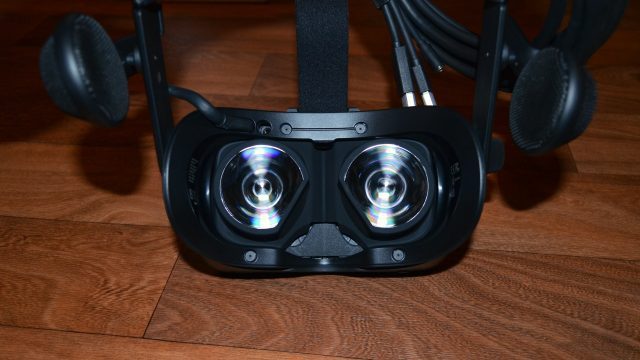
For the most part, everything described above about Index’s visuals is either on par or an improvement over headsets in the same class, but there is one area where Index makes a compromise: glare.
While most other headsets use single-element lenses, Index uses dual-element lenses. I suspect this was done specifically to expand the sweet spot, but I also suspect it’s the reason why glare has become more apparent than other headsets like the Rift S, Vive, and Vive Pro.
I want to be clear here because the terminology surrounding what many users call ‘god rays’ and ‘glare’ is not particularly precise—so I’m going to explain what I’m talking about with a little extra detail.
When it comes to various light-related lens artifacts in VR headsets, there seems to be two major components. The first is what I believe most people are talking about when they say ‘god rays’—that would be the lens flare-like light that seems to directly emanate from bright objects against darker surroundings. God rays are the lines of light you can see coming directly from objects in the scene. These lines are quite defined, and typically point directly toward or away from the very center of the lens; you can see them rotate around their host object as you move your head. A good example is white text on a black background—the text appears to flare in a quite discrete way, directly against and around the text.
Then there’s internal reflections, which generally equates to what some users call ‘glare’ (and that’s how I’ll refer to it here). Glare is the broader light scattering artifacts that don’t appear to emanate as directly from the object in the way that god rays do. Glare scatters around the field of view more globally than god rays.
With that in mind, when it comes to Index, god rays are an improvement over Vive, and look to be about on par with the Rift S. But glare is worse than Rift S, Vive, and Vive Pro, and can be pretty obnoxious when you have large, high contrast elements against darker backgrounds. The glare on Index seems to be brighter and more defined than with other headsets. It also tends to fall toward the outer edges of the field of view, which I suspect makes it more noticeable because of the way that our peripheral vision is more sensitive to both movement and contrast than our central vision.
I suppose this was a necessary concession to achieve other objectives in the lens design, but I’m surprised with how apparent the glare can be at times.
As ever, both god rays and glare go away in scenes with lower contrast. Smart developers can mitigate god rays and glare by avoiding high contrast elements in their content (Lone Echo being the premiere example)—and frankly that would benefit other headsets too if more developers were cognizant of this; maybe Index will be a good wake-up call.
Black Levels & Ghosting
As far as black levels are concerned, Index is on par with other headsets using LCD displays like the Rift S and Oculus Go. Many first-gen VR headsets (like the Vive) used OLED displays that are capable of incredibly dark blacks, which look great in darker scenes, but could be subject to ghosting. LCD can be prone to ghosting too (in different circumstances), but I haven’t spotted any on Index.
Blacks in Index have that classic ‘LCD grey’ look to them, which makes for poor contrast in darker scenes compared to OLED. It’s not a deal breaker, but if you play especially dark games like space sims and are used to OLED headsets, you’ll definitely miss the rich blacks.
Audio
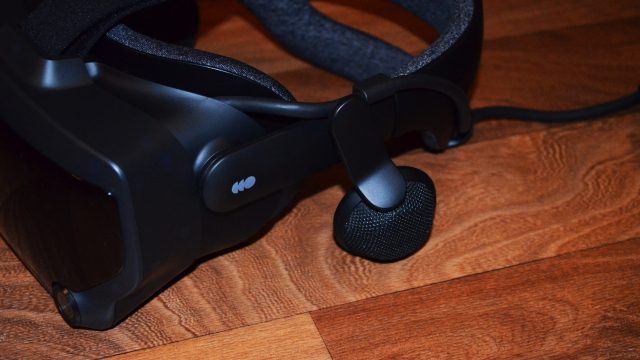
The floating headphones on Index are just flat-out excellent. When you put the headset on, you don’t even know they’re there because they don’t touch your ears. Then the audio comes in and boom—powerful, full-bodied sound; easily the highest quality integrated audio in any VR headset to date. As these are technically speakers rather than headphones, they’re going to be audible to other people in the room, but you’ll want to use them anyway. If you’d prefer another audio solution, you can remove the Index headphones with an allen wrench and plug in your preferred headphones with the on-board 3.5mm jack (hidden under the face gasket).
I’ve already written in-depth about Index’s headphones, though I will share an anecdote.
For me, a true ‘audio upgrade’ is when the upgrade allows you to hear things you’ve never heard before in audio content that you’re intimately familiar with. I’ve logged dozens of hours in The Lab over the years, but it wasn’t until I was using Index that I was struck by how intricate and detailed the sounds are from the little robot dog. It has a bunch of different animations, each accompanied by subtle noises that highlight its movements. I wasn’t even specifically testing the headset’s audio, it was just something that caught my attention as the dog ran around me.
And that’s pretty freaking cool. The Lab came out in 2016—and I’ve explored damn near all of it—but three years later I experienced something that I never really noticed until better hardware came along and revealed it.
I spoke with a VR developer who had this same experience with Index of newly noticed audio details, but in their own application that they work on every day.
Tracking
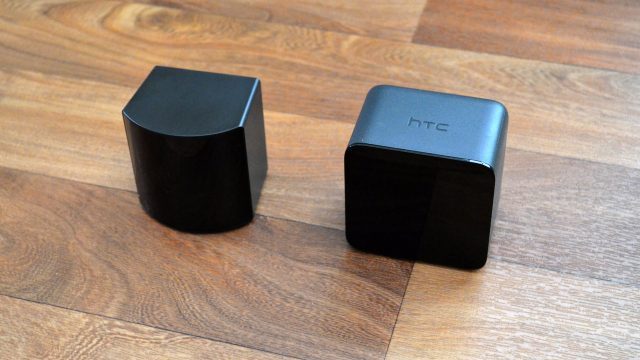
Index makes use of Valve’s SteamVR Tracking tech, and supports both 1.0 and 2.0 base stations. Tracking feels as tight and robust as ever on Index. Especially with the higher refresh rate of the headset, tracking makes movements in fast paced games like Beat Saber feel slightly easier to control.
With two base stations mounted at opposite corners of my playspace, I didn’t notice any occlusion issues while I played despite the front of the headset having many fewer tracking sensors than the Vive headsets.
Valve doesn’t advertise any specific performance improvements from the 1.0 to the 2.0 base stations, though 2.0 can support larger playspaces and up to four base stations for more robustness to occlusion (though the latter benefits scarcely apply to in-home users). Indeed, I haven’t been able to notice any tracking differences between the 1.0 and 2.0 base stations.
For those who ordered the Index full kit (which includes two 2.0 base stations), you’ll also get some mounting hardware included. Each base station comes with a mounting bracket that can be screwed into the wall with included screws. The mounting brackets are also designed to sit on flat surfaces like a table or bookshelf for those who don’t want to screw them to the wall. The standard tripod screw on the bracket can fasten to the corresponding screw holes on the back or bottom of the base stations, making either orientation work.
‘Frunk’
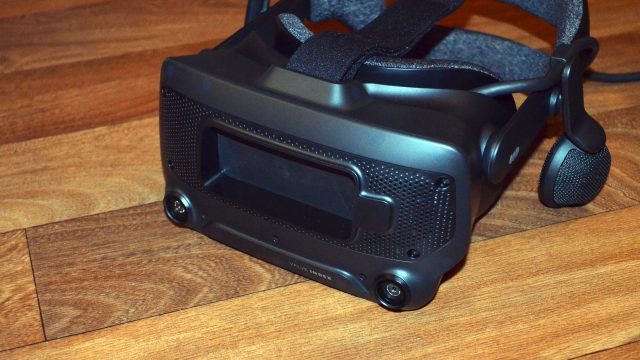
Valve calls the opening hiding beneath the magnetically attached face-plate the ‘frunk’. There’s a USB 3.0 port in the side, and Valve envisions it as an expansion port for people who want to experiment with adding various peripherals and add-ons to the headset. Valve says they have no specific plans for the frunk. Unless someone comes up with some highly essential add-on that fits in the frunk, it seems like a waste; without it, Index presumably could have had a slightly smaller footprint and less weight (especially with removing the plastic faceplate and corresponding magnets).
Index Controllers (Knuckles)
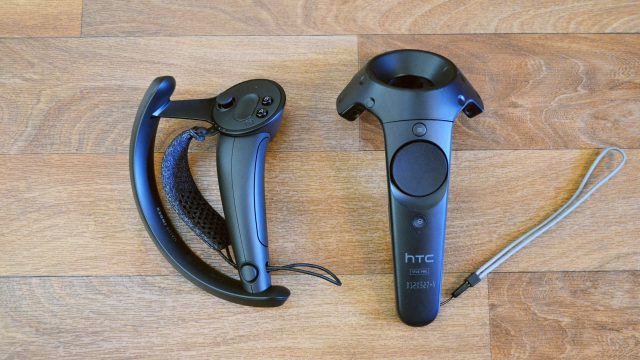
The Index controllers (formerly called Knuckles) can work with any SteamVR headset, and finally offer an upgrade over the Vive wand controllers.
From an input standpoint, the Index controllers are much more aligned with the Touch controllers by adding a trackpad, face buttons, and a much more natural grabbing input thanks to the force-sensitive handle.
Knuckles is unique in two significant ways. First of all, it’s ‘worn’ by tightening a cinch around your hand. This allows you to completely ‘let go’ of the controller while it remains in your hand. The idea is that this will work with the force-sensitive handle to allow for natural grabbing and releasing of virtual objects by simply gripping or not gripping the handle.
The second unique thing is independent finger tracking. The handle has embedded capacitive sensors which detect each of your fingers to animate your virtual hand to match. The trigger and all of the face inputs (stick, trackpad, and buttons) are also capacitive, which means your whole hand position can be pretty effectively tracked and represented virtually.
Merely by having more comprehensive inputs, a more natural gripping input, and a more central center of gravity, the Index controllers are an upgrade over the Vive wands. But the unique selling points of the controller (independent finger tracking and the hand cinch) feel less obviously valuable.
It took a while to find a decent fit for the cinch. My initial instinct was to pull it tight and snug, but after about 15 minutes it started to feel uncomfortable so I had to dial it back and find a balance between keeping it tight enough to keep the controller on my hand but loose enough to stay comfortable. The way the cinch is tightened makes it easy to put more pressure on one side of your palm than the other. I found after tightening the controllers that I’d usually have to adjust the position of the straps against my hand to prevent that pinching/pressure sensation.
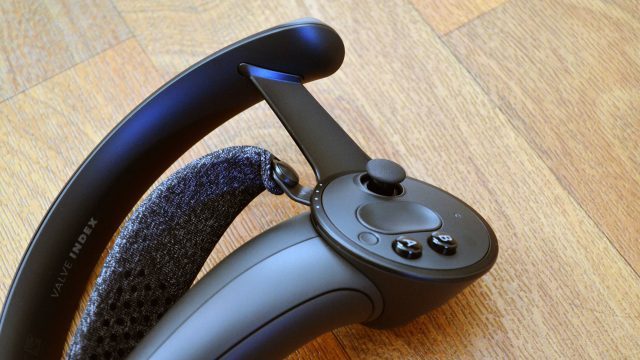
There’s a metal piece that protrudes from the top of the strap and can be moved into four different positions (by pushing it ‘into’ the controller and then rotating), which offers an important adjustment, but I also found that the metal piece sticks out too far and easily gets a bit in the way of reaching for the thumbstick and face buttons.
In the end, the Index controllers can be comfortable, but you’ll need to spend some time really figuring out how to make them fit you.
Then there’s the independent finger tracking, which so far only really matters for the first two minutes of using the controllers—you’ll stare at your moving fingers and then move on to games which make no use of them. Yes, over time more games will add support to correctly animate your fingers, but for all the complexity this adds to the controllers it’s hard to imagine that this is an essential feature. The expectation seems to be that this will make VR more immersive, but without any means of realistic manipulations of virtual objects with your fingers alone (which can’t be done without force-feedback), it really doesn’t seem to be adding much except for those times where you want to stare at your fingers for the novelty of the fact that they are tracked.
Not to be underestimated however is the social presence that can seep in when users have more defined finger tracking. Although clearly an edge case, sign language users might also find Knuckles to be a step in the right direction in translating actual finger movements to VR.

